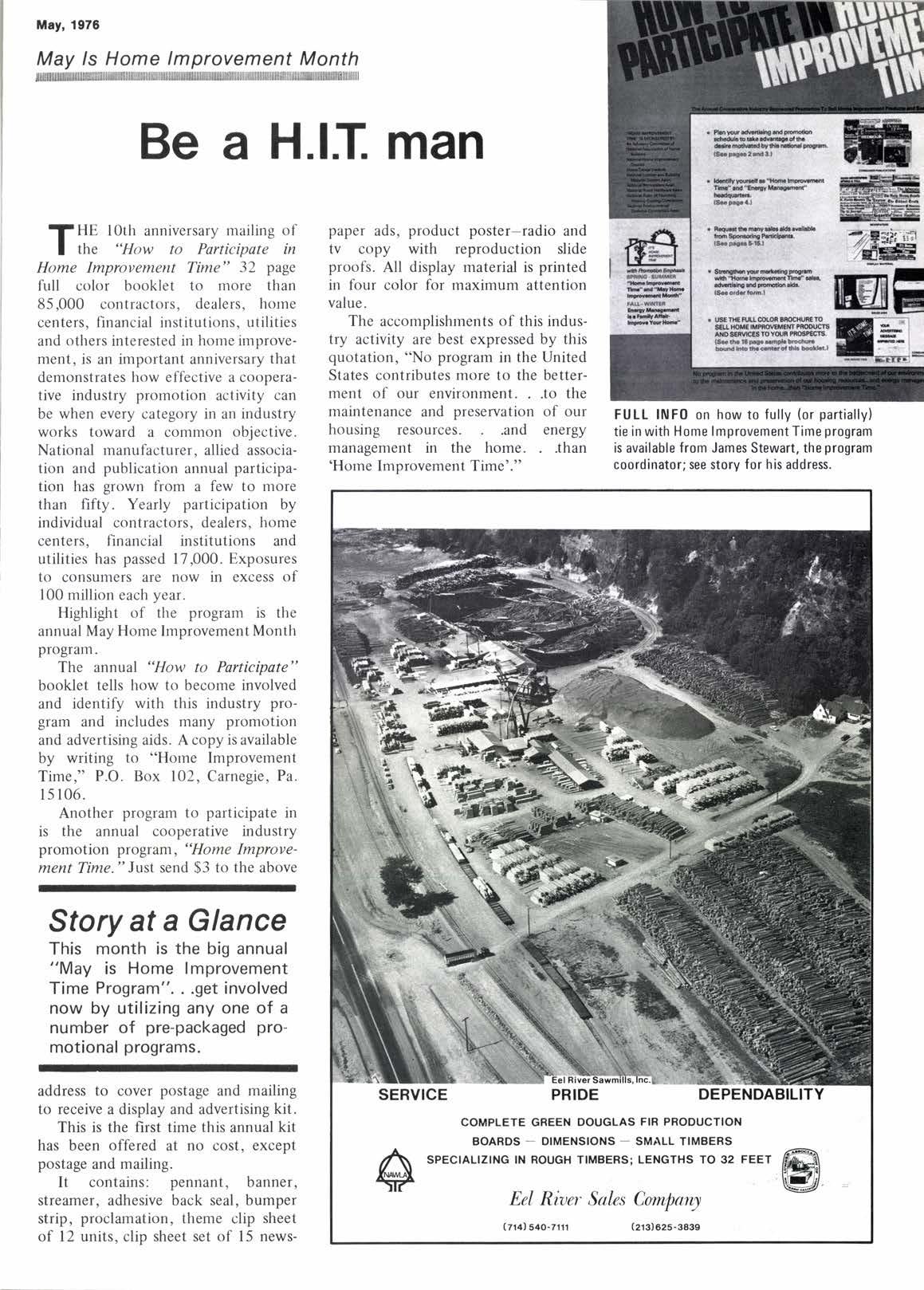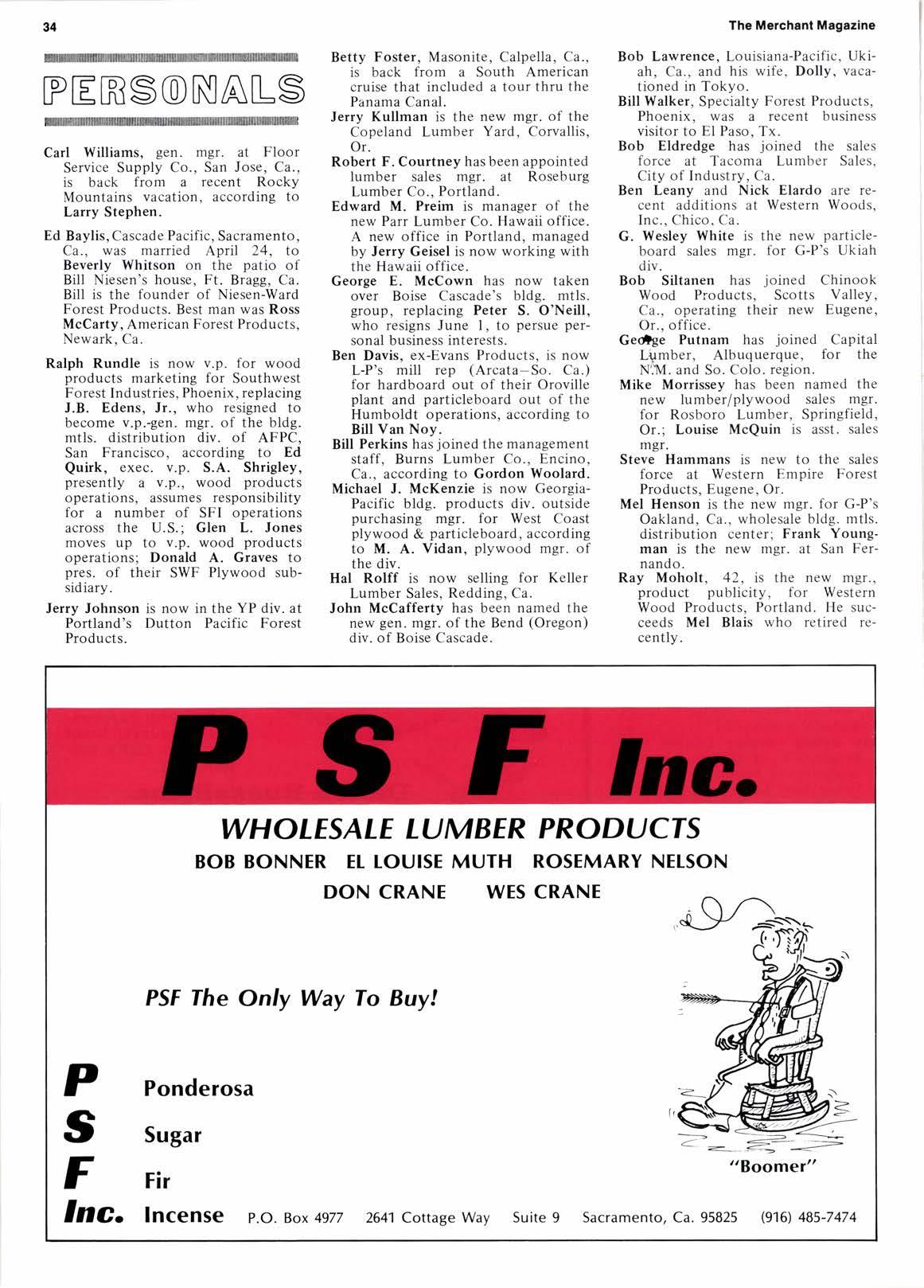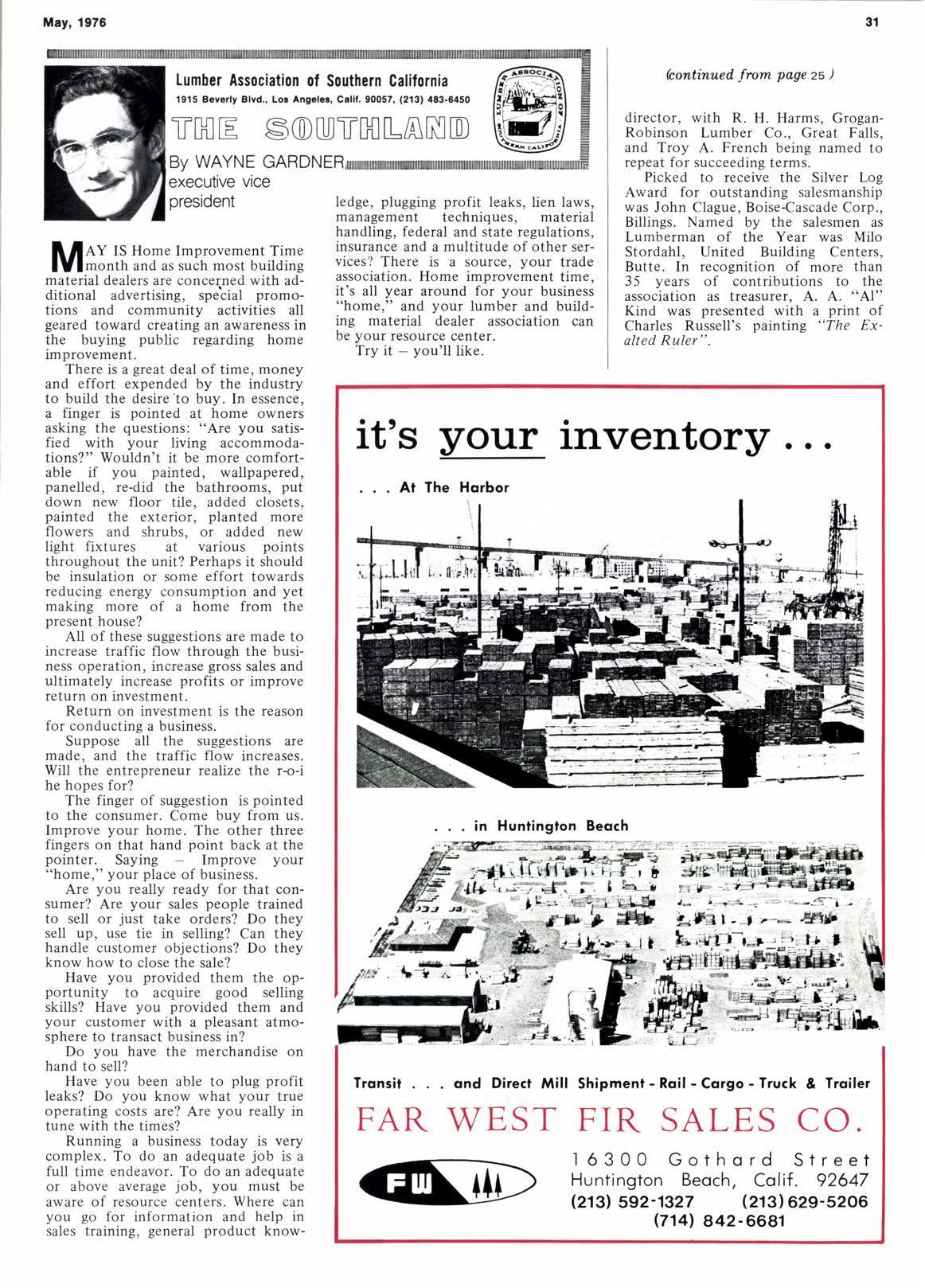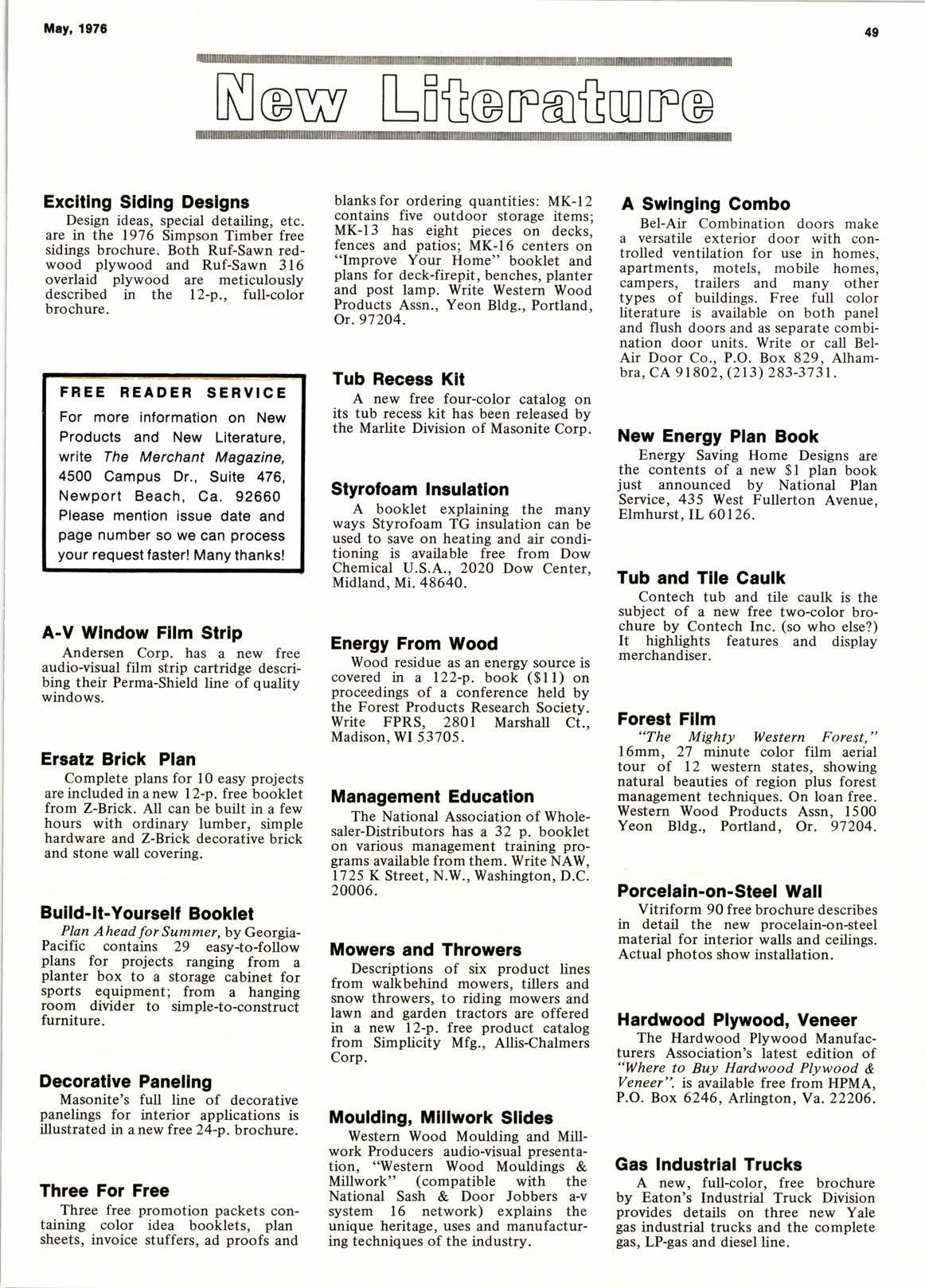
3 minute read
The romance of teak
By James T. Summerlin Robert S. Osgood, Inc. Los Angeles
URELY you have at some time or other been in an office luxuriously paneled in the warmth of teak or have seen a handsome yacht with teak decks and finished trim. Did you ever wonder how this romantic wood was first used and who was initially responsible for introducing this fine, durable timber that today has grown to be one of the most valuable woods in the world?
Let us now look at some of the fascinating history of teak.
India
The versatility of teak has been known for centuries, especially its superiority in the construction of ocean-going vessels.
Records show that the British Admiralty was originally attracted to this valued species in shipbuilding with the construction of the 36-gun frigate, "Salsette", launched at Bombay in 1805. This proved to be so successful that the British Navy Department pressed the Bombay government into allowing an agent to be stationed on the Malabar Coast to take over the rights of teak logging on behalf of the East India Co.
This initial move to reserve the teak forests lasted until about 1822 when outside pressures caused local timber merchants to again cause the dissipation of this prized natural resource.
Recognizing the dangers of extinction, the Bombay government made repeated attempts from 1830 to about 1850 to correct the situation without much success due to the desire to placate the Rajahs, landowners and na-
Story at a Glance
Part one of a two part look at the development in the West of teak, one of the storied woods of the Far East. . .its history and present status in India, Burma and Thailand is outlined.
tive timber merchants who felt they had an ancient right to cut this fine timber at will. Unfortunately, due to these wasteful practices, India plays a minor role in the teak industry today.
This outstanding wood is native not only to India, but also to Burma, Thailand and other parts of IndoChina. Over a span of many generations, it has been introduced into several other countries on a limited scale including Java, the Philippines, Jamaica, the Gold Coast, Trinidad and other scattered areas.
It was the practice (and still is to a small degree) in India, Burma and Thailand to girdle selected trees prior to harvest. This was necessary because green teak logs will not float whereas girdled trees, after drying for two to three years, are light enough to transport by floating on rivers, lashed together as rafts, from the jungles to processing areas. This movement would take years'before reaching the ocean ports. It was in about 1840 that the first account of girdling was recorded.
The amazing durability of teak is demonstrated in its resistance to rot and decay during this girdled stage. This feature was very apparent even in those times with recorded experiences of ships made of teak lasting 30 - 50 years and even longer.
A further demonstration of this unbelievable durability was recently portrayed on a television production showing underwater photographs of the "Andrea Doia" which sank off the coast of Nantucket some 20 years ago. Even though the entire sunken hulk suffered extensive decomposition and was encrusted with marine life, the teak decks were literally undamaged.
Burma
As non-controlled cutting continued in India, evidence of exhaustion was apparent and attention was drawn to fresh fields.
The first Burmese War in 1826 brought this new potential source in the acquisition of three provinces in Burma by Great Britain. Between 1830 and 1855. no less than 123 vessels were launched, all constructed of Burmese teak. As early as 1840, the idea of teak plintations was forming in the minds of those in control from London. This slowly developed into reality especially back in India; by this time, it was badly needed.
A Forest Act was signed in 1865 which marked the establishment of the Burma Forest Department giving some control to the cutting of teak in lower Burma by setting aside 40,000 acres of teak forest. The Third Burmese War of 1885 resulted in additional sources of teak in Upper Burma. Today, the Burma Forest Department controls the management of over 30,000 square miles of reserved forests.
Burma, covering an area about the size of Texas. was a member of the British Commonwealth until January, 1948, when it became an independent nation. This new government, originally modelled after the British parliamentary system, gradually became more socialistic. The transition resulted in the nationalization of the teak trade by taking over control ofall teak concessions and a substantial part of the sawmill industrv.
This development strongly affected firms such as The East Asiatic Co. which had established an office in Rangoon in 1930. A State Timber Board was established as an organ2ation to oversee production and sales. Since the East Asiatic Co. was one of the remaining original foreign firms doing business in Burma, it was appointed sales agent in a number of overseas markets up until 1960.
Today all export business must be conducted through a variety ofgovernment agencies, mainly the State Timber Board. (Continued next month)










